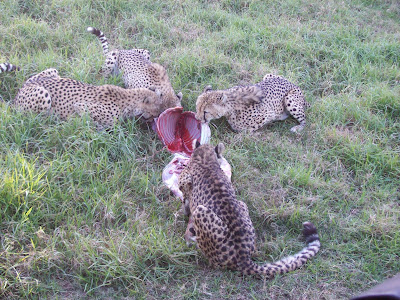




While no real Boer War battles were fought in the vicinity of Port Elizabeth, the British did fear a possible Boer attack. So, on the outskirts of PE, a series of trenches were built and a small fort to secure the city's resevoir and important railway bridge. At top, from the vantage point of the stone fort, is the railway bridge. If you were to follow the gulch in rightward direction for several miles, the stream would lead you to the reservoir. The next two photos show a gun port in a fort wall. You can see that lacking other building materials, British soldiers stacked up the stones to build the defenses. Hard work in the African sun. In the bottom two photos, the local historian, a Mr. Tomlinson, discusses the remnants of the trenches in which we are standing.





























